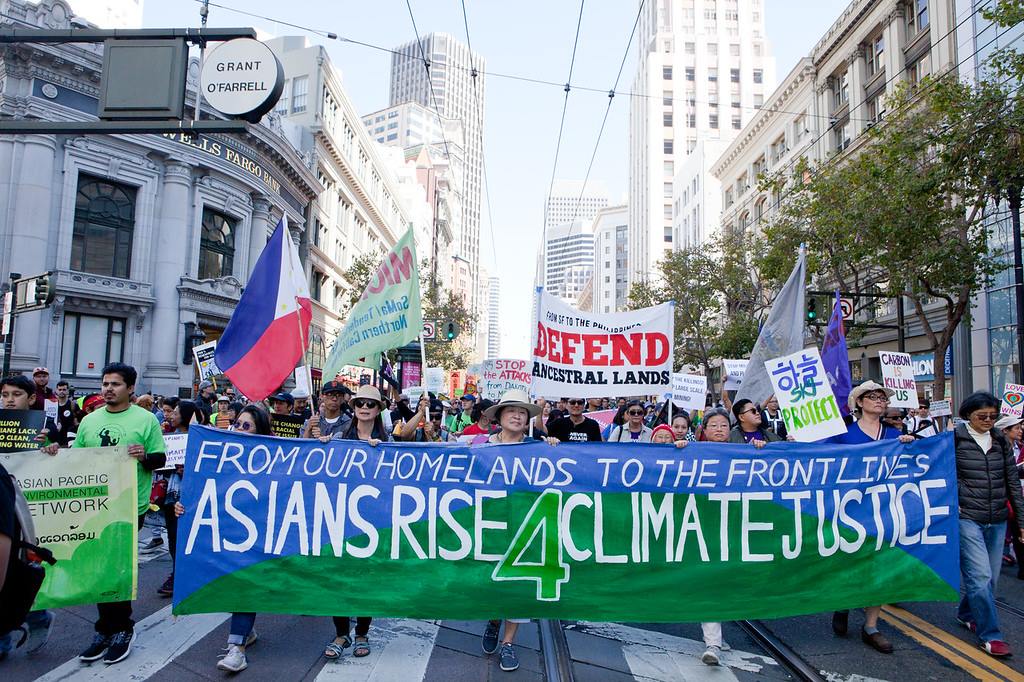9 Ways to Be More Eco-Conscious This Holiday Season
With the holiday season comes endless tinsel, gifts, and decorations. And with it, also comes mountains of waste piled as high as a Christmas tree.
If Greta Thunberg hasn’t scared you enough into being more eco-conscious lately, let me just reiterate:
Climate injustice forced me to risk my education and fight for everyone. I am the voice of the dying children, displaced women suffering at the hands of climate Crisis. @GretaThunberg @camanpour @ingridfcnn @Fridays4FutureU @Fridays4future @Luisamneubauer @antonioguterres @350 pic.twitter.com/4jPxSXm9l2
— Nakabuye Hilda F. (@NakabuyeHildaF) December 13, 2019
How big is the CO₂ bucket for 1.5°C?
Well, the bucket is about to overflow in a few short years, unless we:
1. Turn off the tap (urgently)
2. Put a hole in the bottom to remove CO₂ (negative emissions)#COP25 #CarbonBudget @FutureEarth @gcarbonproject https://t.co/ycYcuFSPdF pic.twitter.com/o7JwZt7GlX— Glen Peters (@Peters_Glen) December 13, 2019
The smoke enveloping Sydney is absolutely staggering. This is a crisis pic.twitter.com/aC07VweOje
— Brian Kahn (@blkahn) December 10, 2019
Indigenous people are literally being murdered for trying to protect the forrest from illegal deforestation. Over and over again. It is shameful that the world remains silent about this. https://t.co/u1eLE8t0K4
— Greta Thunberg (@GretaThunberg) December 8, 2019
The consequences of these outcomes will be devastating to not just future generations but the current ones as well. Among the first to feel the effects will be poorer nations who are less responsible for the crisis but will inevitably suffer the most due to their location and lack of financial resources. Research has also shown repeatedly how Asian countries will be one of the hardest-hit regions affected by climate change.
While individuals can only do so much to make an impact on the carbon footprint — seeing as at the end of the day, it’s the larger corporations who hold the power — it still helps to be even just a bit more conscious in our day to day lives.
Holiday seasons can be one of the most wasteful times of the year, so to help you end 2019 on a positive note, and get you set up for a great start to the new year, here are 9 things to keep in mind for an eco-conscious festive season.
1. Ditch the festive gift wrapping paper

All of those ornate and decorative gift wraps may be tempting but the lamination, gold foil, and glitter covering the material can actually make them harmful to the environment. In fact, most wrapping paper and ribbons are not recyclable, meaning they will end up in landfills, along with all of those plastic straws.
Instead, stylish brown paper or newspapers can make for stunning alternatives along with twine and branches in place of plastic ribbons. This method of gift wrapping may not be as colorful but it certainly adds an elegant touch to the traditional plastic gift wraps.
2. Gift a reusable boba cup

You’ve definitely heard this one before but here we go again — the plastic straws and cups that come with every boba order are obviously bad for the environment. Just think of how many single-use plastics boba shops discard on a daily basis.
Galina Lang, a former boba barista and founder of BobaMate, a reusable boba cup company, has stated that “More than 60,000,000 plastic boba cups are estimated to end up in the ocean on an annual basis until 2023.” While so many of us drink boba regularly without a second thought, our addiction could also have terrible implications for the environment.
It’s a far better option to invest in an affordable reusable boba cup. There are also some local boba shops that have already switched to biodegradable cups and straws, so go and show them some love! It’s worth encouraging other boba shops to follow in their footsteps.
3. Turn down the thermostat

As annoying as it may sound, our Asian parents may have been right to turn off the heaters during colder months. According to SanDiego.gov, “home energy use produces twice as much pollution as a single car in one year.”
Sure, it’s not always the most pleasant experience having to wear a dozen layers in your own home, but if possible, turning off appliances and turning down the thermostat can be a great but simple way to be a bit more eco-friendly this winter. That’s what fleece blankets and hot water bottles are for, right?
4. Donate to local environmental charities

Another simple way to spread holiday cheer while helping the planet is to DONATE to local environmental charities. Organizations like APEN (Asian Pacific Environmental Network) understand that climate change is far more than just an environmental issue — it’s a social, economic, and political issue as well, affecting the most vulnerable members of our society.
As pollution begins to worsen, it’s no secret that the costs of living will rise — making basic necessities such as food, water, housing, and energy inaccessible to the working class. In an economy based on exploitation, the wealth remains in the hands of the few while those living in polluted, poverty-stricken communities have little to no resources to survive. “This system cannot last; our planet can no longer sustain it and our people will no longer tolerate it,” APEN states on its website.
APEN has worked with Asian and Pacific Islander immigrant and refugee communities to help design projects that have brought down energy costs for neighborhoods through the construction of 100% clean renewable energy resources. “APEN is building the power of Asian communities on the frontlines to stop big polluters from poisoning our families and destabilizing our climate,” its website states.
5. Limit takeaways

Another way to limit waste — and simultaneously be a bit healthier for the new year — is to limit food waste and the usage of plastic and styrofoam containers. Yep. This means, saying no to getting takeout food on the regular and choosing to only buy food that you need. Instead, get creative with your leftovers and choose to meal prep for lunches at work.
Why get a greasy takeaway in styrofoam containers when you can take one of these stylish bamboo bento boxes to work?
6. Switch to LED Christmas and fairy lights

If you’re someone that can’t go through the holidays without putting lights up all over the house — or someone who leaves fairy lights up 12 months out of the year — it’s worth switching to LED lights. LED bulbs require less wattage to run, meaning it will use less electricity and emit fewer greenhouse gases compared to incandescent light bulbs.
7. Gift sustainable clothes or clothing rental memberships
Everyone loves gifting fast fashion purchases around Christmas time, and why wouldn’t they? These clothes are cheap, fashionable, and make for great stocking stuffers. But, textile production is actually one of the most polluting industries, producing 1.2 billion tons of CO2 per year. Meaning your monthly Forever 21 hauls aren’t as innocent as they may seem.
Many clothing brands such as H&M and Zara have begun embracing sustainable materials which are certainly an improvement. But to make even more of an impact, some are turning to clothing rental services like “Rent the Runway” to minimize fashion waste.
Major brands such as American Eagle, Express, and LOFT have also hopped on this bandwagon by producing their own rental services where customers can pay a reasonably affordable membership to rent outfits instead of purchasing new products.
8. Opt for plantable Christmas cards

There is so much extra paper waste around the holidays, and those glittery plastic-coated festive cards are no better than the non-recyclable gift wraps. Luckily, there are several companies that sell plantable holiday cards made of biodegradable seed paper.
These cards contain a mixture of wildflower seeds which means you can gift a card and a gorgeous garden, all in one little envelope.
9. Stop using disposable chopsticks at parties

Disposable chopsticks are made of wood so they must be safe for the environment, right? Sorry, but no.
According to a United Nations report from 2008, mass production of wooden disposable chopsticks has been adding to the plague of regional deforestation, wiping out 10,800 square miles of forests in Asia.
Not only that but Chinese media investigations have also found many harmful chemicals during its production, such as industrial-grade sulfur, paraffin — a known carcinogen, insect repellent, and hydrogen peroxide. This means that chopsticks that have been irresponsibly disposed of can actually contaminate the quality of water and soil, making it harmful to humans and the planet itself.
Feature Image via Getty (Left), BobaMate (Right)
The post 9 Ways to Be More Eco-Conscious This Holiday Season appeared first on NextShark.
Contributer : NextShark



 Reviewed by mimisabreena
on
Saturday, December 14, 2019
Rating:
Reviewed by mimisabreena
on
Saturday, December 14, 2019
Rating:















No comments:
Post a Comment